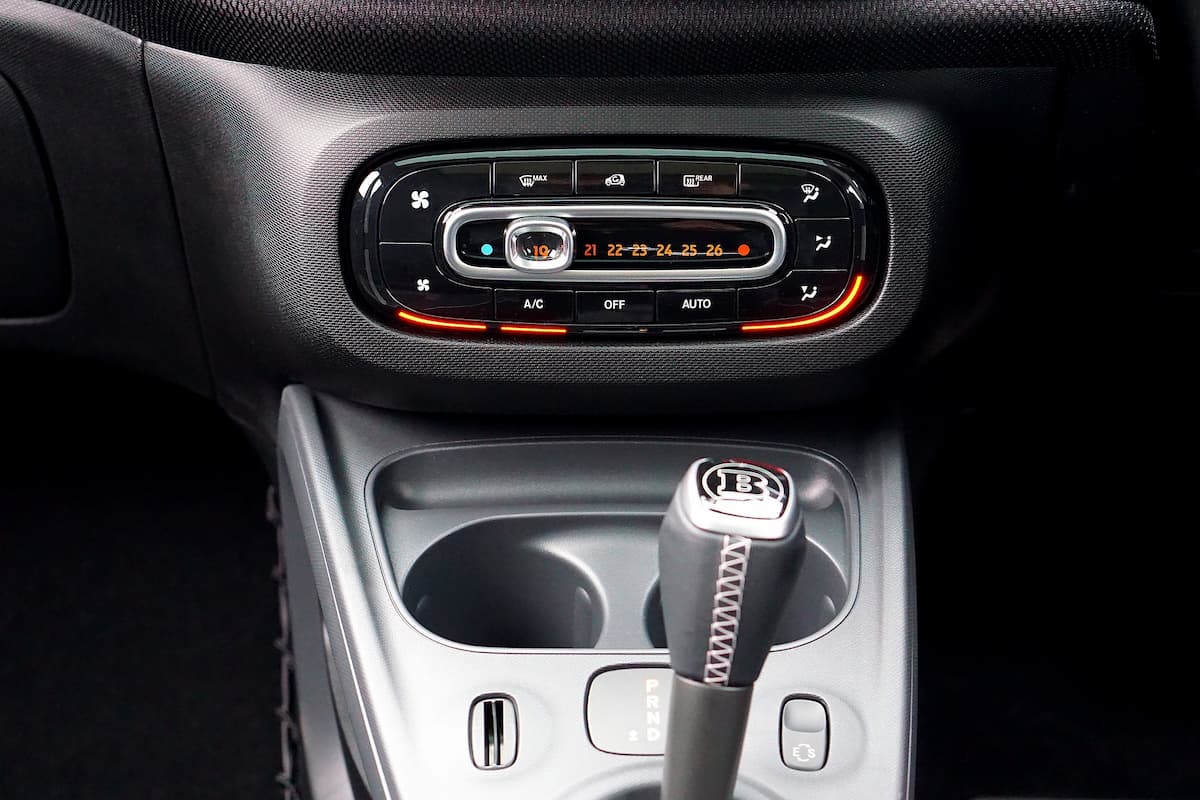What Temperature Should A Car AC Be?
Discussing the perfect air temperature for a car is tricky. Everyone’s ideal is different, but vehicle air con should run between a set range of temperatures.
Older cars are more likely to have A/C problems, but let’s not pretend newer models can’t have issues that prevent proper cooling.
Fortunately, there are guidelines you can use to understand if your A/C is functioning properly, regardless of the year of your vehicle.
The ideal A/C temperature in a car depends on how warm it is outside. If it’s 70°F (21°C), the A/C should be 35°F to 40°F (1.6°C to 4.4°C). If the ambient air temperature is 80°F (27°C), the air from the A/C should be 45°F to 50°F (7.2°C to 10°C).
Contact a technician if your A/C temps are higher than these ranges. The issues can stem from failed fuses to leaking refrigerant, and a professional will know how to find and fix the problem.
How To Test Your Car’s A/C

If you take your vehicle to the shop, the technician will test your A/C temp using specialized equipment.
Their numbers will be more accurate (depending on how they measure); however, you can check your A/C air temperature at home.
You’ll need an accurate thermometer attached to a long metal probe. The probe lets you get deep inside the vent for more precise measurements.
Once you have the thermometer:
- Move your car to the shade. Ensure the location is well-ventilated and there is no sunlight.
- Measure the surrounding air temperature and record it.
- Get inside your car and open the center vent on the dashboard.
- Close the windows and the other air vents.
- Turn on the ignition and set your A/C to the coolest possible setting. Ensure the fans are moving at the slowest speed.
- Insert the probe thermometer inside the central air vent and take it out.
- Record your reading.
You can repeat this process a couple more times to confirm.
Reasons for a Malfunctioning A/C
A malfunctioning A/C does not cool the air, regardless of the weather.
Faulty systems can be caused by:
Leaking Refrigerant
A refrigerant is a substance that changes state from liquid to gas (and back again) depending on its interaction with the surrounding air.
Air conditioning occurs when the refrigerant absorbs and releases heat at strategic points in the A/C system.
If this compound leaks, heat absorption becomes irregular, affecting air temperatures.
Refrigerants can leak for various reasons, including seal failure or insufficient lubricant on the seals. Before refilling your vehicle’s refrigerant, a professional should take a look and troubleshoot why it is leaking.
Clogged Tubes
If your A/C isn’t working, it might just be dirty.
The A/C system in a car relies on several interconnected tubes. Dirt and debris may accumulate in these tubes, clogging some of them and affecting the flow of refrigerant.
As mentioned, when there is insufficient refrigerant, your A/C will not work as intended.
Defective Compressor
The compressor is the primary part that circulates refrigerant in an A/C system. If your compressor malfunctions, it won’t pump refrigerant properly, and the system can’t cool the air.
Most compressors break after long periods of inactivity. Many drivers don’t use A/C in the winter and then turn it on four to six months later, only to shock the system.
The issue is repairable, but you can avoid it by turning your A/C to maximum every three weeks for at least twenty minutes, even in the winter.
It can help defog your windows, and your compressor will thank you.
Air Conditioning Best Practices

Here are a few pointers to help avoid problems with your A/C.
1. Do not turn the A/C to maximum the minute you start your vehicle.
If your car is in direct sunlight or it is very hot outside, open the windows for at least 10 minutes to let out hot air, then turn on the A/C.
Prematurely turning on the system only circulates the warm air inside your vehicle, canceling out the cooler air and putting strain on the system.
2. Do not keep recirculation mode on at all times.
While recirculation mode helps cool your vehicle faster, it can trap humidity and fog up your windows, especially if it’s cool or wet outside.
3. Do not turn on the A/C if the windows are open.
This is a no-brainer.
Ambient air temperatures affect the temperature of the A/C. The more warm air you blow into the vehicle, the harder the A/C has to work, the more strain you put on the compressor, and the more fuel you burn.
4. Do not direct the air to you or your passengers.
For even air distribution, point the jets towards the roof. Heat rises, so cooler air eventually comes down, making things more comfortable for you.
5. Have regular system check-ups.
Vehicles require maintenance based on the total miles driven. When it comes to your A/C, have it checked out after 10,000 to 15,000 miles.
When taking your car for a comprehensive check-up, you can also have a mechanic look at your air system to nip any problems in the bud.
6. Routinely drain and refill your coolant.
Even a healthy system loses a little coolant yearly, and occasional refills help keep it fresh and avoid flow issues.
You can refresh it every three to four years, but you should confirm the exact figure with your vehicle’s maintenance guide, as some cars may leak refrigerant faster than others.
7. Keep the system active during the winter.
Routinely turn on your A/C every two to three weeks in the winter to extend its life.
Keeping the system active reduces refrigerant loss, preserves the compressor oil, and keeps the seals from becoming permeable – all critical aspects of a well-functioning system.
8. Turn off the cooling functions before the fan.
A/C systems pull moisture from the air as they cool. But that moisture has to go somewhere and can accumulate in your system.
Moist environments are ideal for growing bacteria, mold, and fungi.
To avoid moisture build-up, turn off the cooling functions of your A/C before you turn off the fan.
Running the fan for several minutes helps clean out the system and dry up any residual moisture.
Conclusion
A well-functioning A/C requires a simple tap of a button or turn of a knob to work at its ideal temperature.
The A/C temperature in a car depends on outside air temps. If it’s 70°F (21°C) outdoors, the A/C should run at 35°F to 40°F (1.6°C to 4.4°C). If it’s 80°F (27°C), the air should be 45°F to 50°F (7.2°C to 10°C).
You can reduce the chances of a faulty system by implementing best practices like routine maintenance and refrigerant refills.






